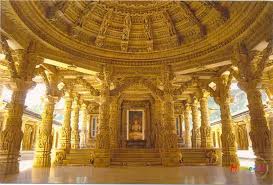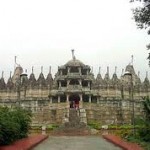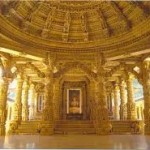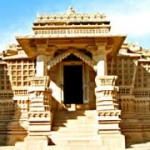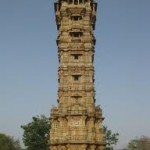Jainism is an ancient religion that has, over the centuries, had a great impact on Indian culture. As a religion, it has a great following; larger than what the numbers would suggest. The result therefore is that there are a plethora of Jain temple across India, though mostly found in the western states of Rajasthan, Gujarat and Maharashtra. However, in comparison to Hindu temples in the country, Jain temples are few and far apart. On the surface of it, it may seem that Jain temples are simple and somewhat cold (a result of the fact that they are often carved out the same stone/rock). However, on closer examination, Jain architecture is often awe-inspiring.
Yet, Jain architecture cannot be credited with a style of its own. At the beginning, it was merely an offshoot of Hindu and Buddhist styles and their temples were often adjoining Buddhist temples, imitating their rock-cut style. These initial temples were mainly carved out of rock faces and the use of bricks was almost negligible. In the later years, the Jains started to build temple cities on hills based on the concept of ‘mountains of immortality’, far removed from Hindu and Buddhist concepts. These temple cities were not built specific to any plans and were instead results of sporadic construction. However, it is interesting to note that the higher you go on these hills, the grander the architecture is.
In terms of elements in architecture, most Jain temples have numerous pillars which can look like a mindless labyrinth but actually have a well designed structure, forming squares. The squares thus formed create chambers, used as small chapels and contains the image of a deity. From these pillars, there are richly carved brackets that emerge at about two thirds of their height. The roofs of these temples have pointy domes and wherever there is a dome, the pillars are omitted as if to create an octagonal space within the temple.
The only variation in architecture specific to Jain temples is the frequently seen four-faced or chaumukh design. In these four faced temples, the image of a Tirthankar faces all four sides or images of four Tirthankar are placed back to back to face four cardinal directions. Entry into these temples is also from four doors that face the cardinal directions.
The most spectacular of all Jain temples are found at Ranakpur and Mount Abu in Rajasthan.
Another element of Jain architecture are towers of Sthambas which were meant to commemorate victories in war. For example, the Jaya Sthamba constructed by Rana Kumbha was to commemorate the defeat of Mohammed of Malwa. The Sthamba in question is nine stories high, with the topmost two stories being open.

